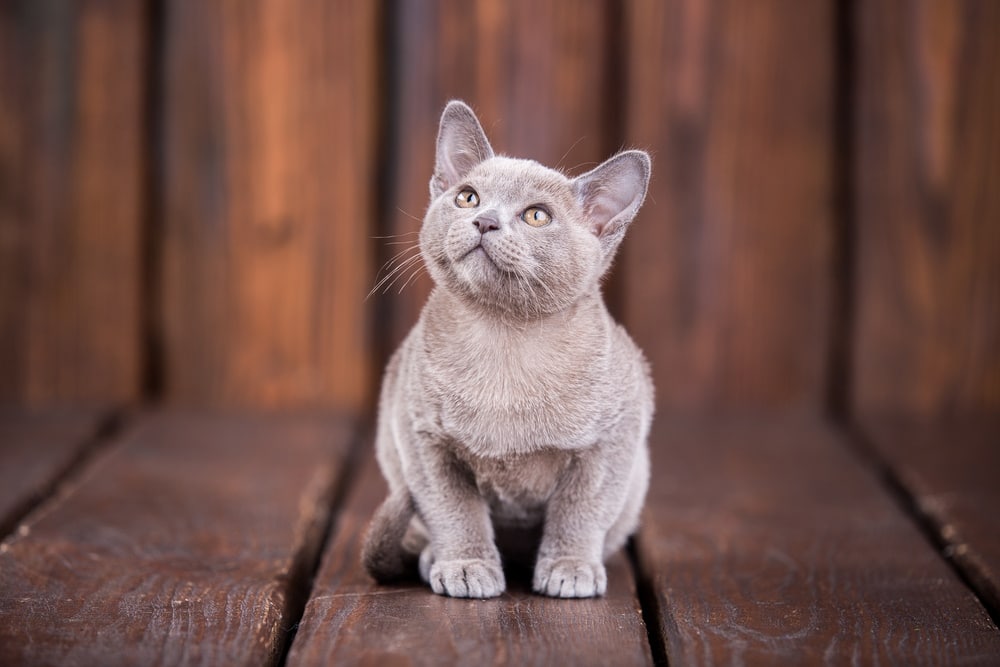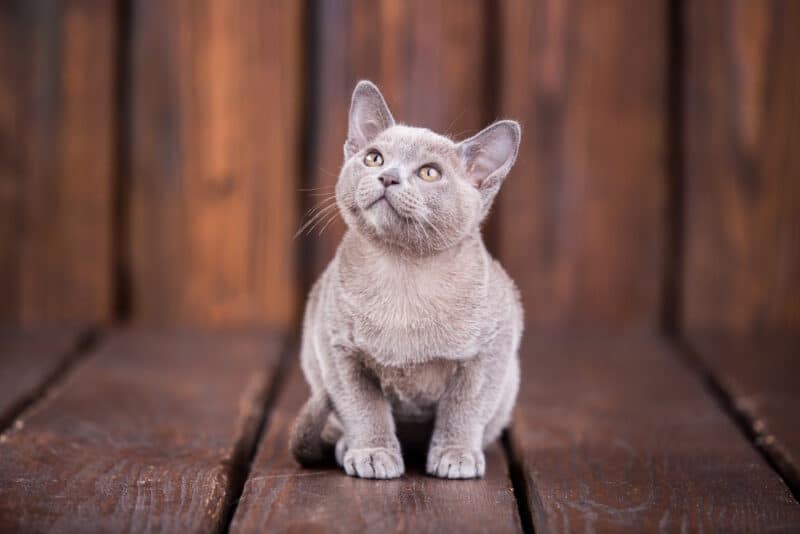Click Below to Skip Ahead
When researching any cat, it is important to understand the different personality traits that go along with each breed. If you aren’t familiar with the breed, it could cause some expectations that aren’t quite right, which make it difficult to map out your relationship. Instead, you’re doing the right thing by learning about the cat breed you’re interested in. In this case, get to know the lovable, intelligent European Burmese.
These kitties are solid, both in temperament and structure. They can make wonderful additions to lively homes that are constantly growing or changing. They also have beautiful colors to choose from. Are you still interested? Let’s delve deeper.
Breed Overview
Height:
9–13 inches
Weight:
7–15 pounds
Lifespan:
10–17 years
Colors:
Blue/gray, chocolate brown, sable, lavender/silver, lilac
Suitable for:
Virtually any lifestyle
Temperament:
Active, amiable, adaptable
The European Burmese is a fit for virtually any cat lover. They are cheerful cats with a happy-go-lucky approach to life. They love having something to do and make phenomenal hunters, so prepare yourself with various exciting toys and activities. These cats are also lovable, cuddling up with you when you’re both ready to relax. We have no complaints about this companion!
European Burmese Characteristics
European Burmese Kittens
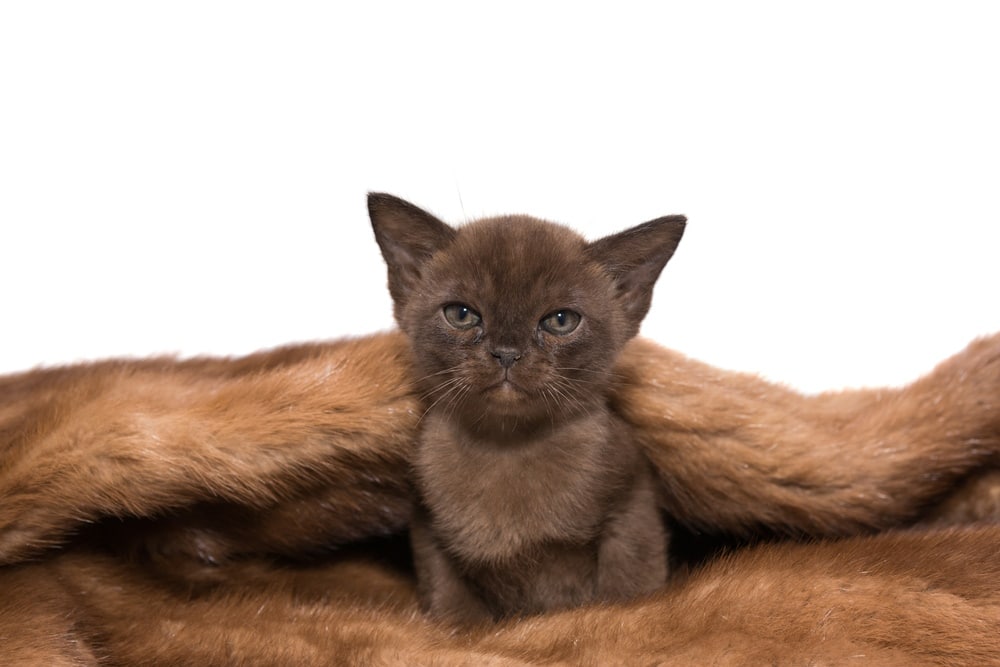
European Burmese kittens might be hard to come by. These cats are relatively rare in the United States, and you might have to look around for a breeder before you find the right match. Once you find them, kittens might not be readily available, so be prepared to be on waiting lists and have to travel. But they are well worth the wait.
If you’re impatient, try looking at rescue or shelters to see if they could have a cat of Burmese origin. Shelter cats often come fully vetted, tested, and ready to go to their new forever homes. It eliminates a lot of the upfront cost.
These kittens are inquisitive, good-natured, and thrill-seeking, constantly on the go. If you enjoy a more relaxed cat that doesn’t cause much fuss, this is really not the breed for you. These cats are incredibly in tune with their environment and love to learn new things daily. They require lots of stimulation, especially in their younger years. Like all other cats, these cats reach sexual maturity between 4 and 6 months of age.
It is important to get your cat fixed beforehand to eliminate a lot of the behaviors that come along with maturity. These can include spraying, marking, yowling, and excessive behavioral changes. Getting your cat to the vet around 4 months is best to schedule that surgery.
Temperament & Intelligence of the European Burmese
The European Burmese is such an intelligent feline! They will impress you every day with their incredible brilliance. You couldn’t easily teach this cat to walk on a leash, learn commands, and follow suit. Or, if you prefer, you can just have a happily active cat in your home that lazes about with you at their leisure.
Because the Burmese is very active, they will love to explore their surroundings. They will thrive on stimulation And require a good deal of activities in the home to keep them occupied. Your cat will very much love to exercise and explore. You will find that with this cat around, no mouse will go undetected. They are incredibly sharp and intuitive.
This is the type of cat who can easily learn to open cupboards and get into every nook and cranny—so make sure to prepare for the shenanigans. They will have you laughing in disbelief at every turn. These smart critters love to figure things out, so even having some fun activities like puzzle games or making a scavenger hunt can really stimulate their brain!
These cats can be more vocal than others, so be prepared for them to chime in during conversation. If you prefer a less vocal cat, you’re really taking a gamble here. However, in most cases, it’s no problem for people. They enjoy the sharpness and brilliance of their kitty and can deal with a little idle prattle.
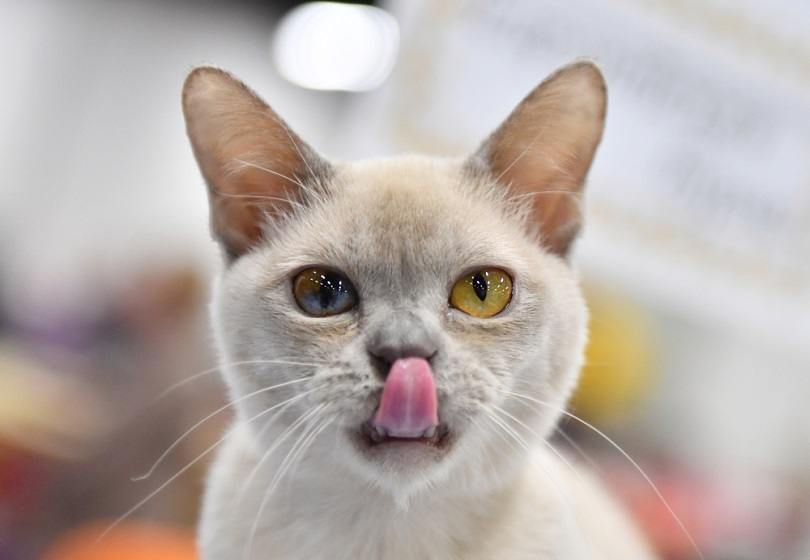
Are These Cats Good for Families?👪
These cats make incredible additions to families! They have the attitude, personality, and adaptation qualities to make a stellar addition to many different homes. These cats tend to acclimate very well with most members of the household. If children are taught basic handling practices and mutual respect, they can have very fulfilling relationships with even the tiny members of your home.
Because they are active, they will need some things around the home to fulfill them and keep them occupied if they will spend long stretches home alone. These kitties prefer to have someone around at all times but can get along okay if there is no other soul around—furry or human. Just make sure they have lots to keep them busy so they don’t get too destructive.
Does This Breed Get Along With Other Pets?🐶 😽
The Burmese is certainly an agreeable cat. They tend to get along very well with other pets, of their same species and otherwise. They can often integrate into families, no matter how many pets you have. Dogs, cats—your Burmese won’t be picky, although for energy reasons, two kitties bounce well off one another (literally!).
Keep in mind that while these cats might get along very well with your canine companions and other cats, they may not acclimate well to smaller animals. Cats are natural predators and extremely talented hunters. If they are left with a caged animal of any kind, whether bird, rodent, or reptile, trouble could be on the horizon.
If you’re introducing new animals, make sure to do so appropriately. You won’t want any current household members to feel negatively about the newcomer—and you want the kitty to be comfortable in their new setting, too.
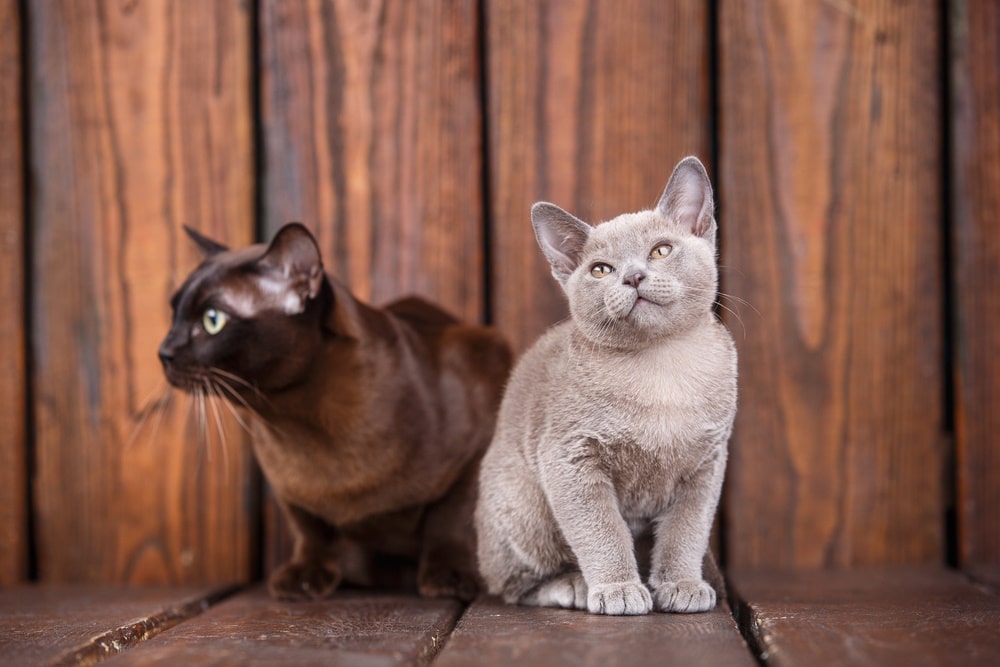

Things to Know When Owning a European Burmese
Food & Diet Requirements🐡
The European Burmese, like all cats, is an obligate carnivore. They require a protein-dense food with all the essential vitamins and minerals their bodies need to thrive. Cats are usually pretty hardy, and the most common forms of food are still dry kibble and wet canned food.
However, many families are choosing fresh food to create a more species-specific meal. These dishes contain all necessary ingredients to have a healthy, strong cat. Plus, it’s oh-so-tasty in comparison to boring kibble. So, if you were looking at wet food selections but can’t find a nutritionally sound one, you could try fresh food options instead.
Ultimately, you should ask your vet for guidance. They can help you choose the recipe that is the most fitting for your cat.
Exercise🐈
Cats require roughly 30 minutes of exercise per day to stay happy and healthy. Getting them to romp around for a few moments shouldn’t take much convincing. Some cats have different preferences, but getting their daily steps in shouldn’t be too difficult. These cats are pretty active and totally ready for adventure.
These cats also make excellent candidates for things like wall hangings where your cat can climb up or down at their leisure. They also would love a cat exercise wheel or even an outdoor cat sanctuary. So, get your DIY cap on and have a look at some options.
Keep in mind—this cat is a lot like a dog. You can easily train the breed to walk on a leash, so you can have daily jaunts with your purring partner.
Training🧶
You should have very little problem training your Burmese. These cats tend to catch on very quickly and thrive on human connection. The first time you show your cat the litter box, they should pretty much have it from there. If not, simply leave them in a controlled space until they have the hang of it.
You can get very complex with training when it comes to this specific breed. They take direction very well and love to learn new things. So, be sure to have a pack of their favorite treats handy and get to work!
If you’re having behavioral troubles with your Burmese, don’t fret. Often, it is a matter of handling the situation correctly to find a suitable solution.
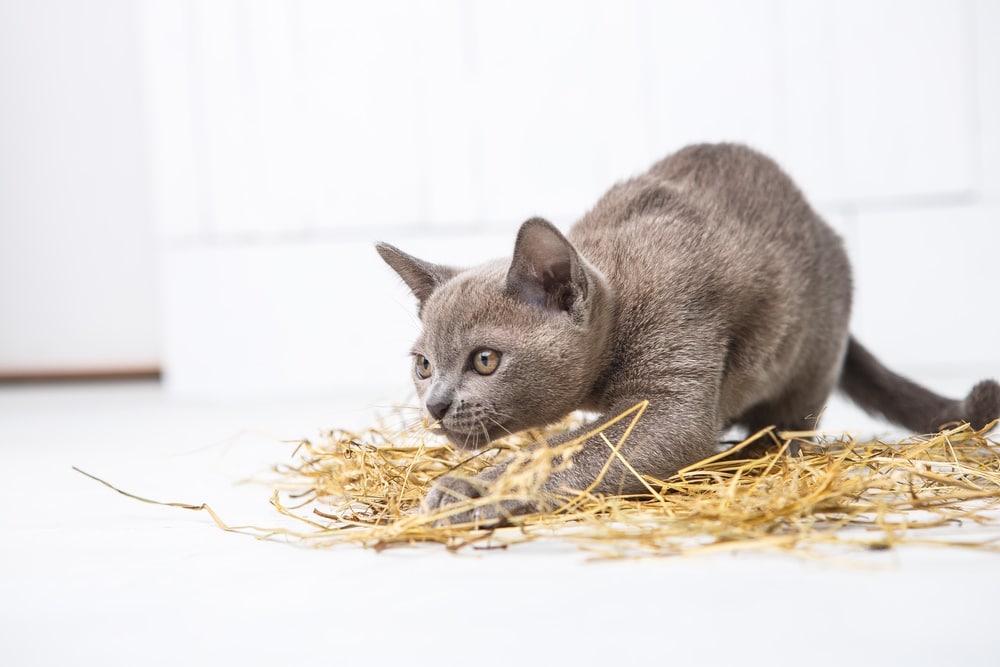
Grooming✂️
The Burmese has a relatively easy-to-maintain coat. It would help if you didn’t have too much of a problem taking care of things. Cats are avid groomers, ensuring they are taken care of. They care very much about their hygiene and will sit for long hours by windowsills getting the job done. You can help them along, however, by providing them with the right care.
These cats should get used to being brushed, but they won’t need it continuously because their coats are easy to maintain. Just a few passes should collect shed, and all is well.
While it’s up to preference, you can give your cat a bath once every 6 weeks. To reduce the risk of irritation, try to buy species-specific, hypoallergenic shampoo.
Health and Conditions🏥
Every cat has the potential to suffer from a genetic disease. In the case of the Burmese, there are certain genetic health conditions that they could suffer from. For the most part, however, they are pretty healthy.
During their first year of life, your cat is going to get very used to their veterinarian. You’ll have to take them for vaccinations, routine checkups, and a variety of other services, like spay or neutering. After the first year, they will need to see their vet at least once annually to prevent disease or get ahead of any developing health conditions.
- Asthma
- Feline orofacial pain syndrome
- Inflammatory bowel disease
- Corneal sequestration
- Lymphoma

Male vs Female
Males and females vary for a variety of reasons. First, they tend to peak at sexual maturity and display both similar and different behaviors. For example, both are capable of spraying, and each one does so for territorial or mating purposes. However, males spray to mark their territory while females spray to try to lure a mate or to ward off other females.
As far as looks goes, the males are larger and stockier than their female counterparts. They tend to weigh more and have a solid structure. Females are a bit daintier and light-footed.
While there are no personality certainties between males and females, males tend to be more outgoing or lovable as a whole—in all cats of all kinds. Females are a little more selective about who they bond with, but they are still oh-so-sweet.
3 Little-Known Facts About the European Burmese
1. The European Burmese has other names!
The European Burmese also goes by the British Burmese cat.
2. The European Burmese is very uncommon in America.
Since there is the American Burmese, European varieties are often very hard to find in the United States.
3. The Burmese influenced many other cat breeds.
The European Burmese influenced the creation of the Burmilla, Tonkinese, and Bombay.
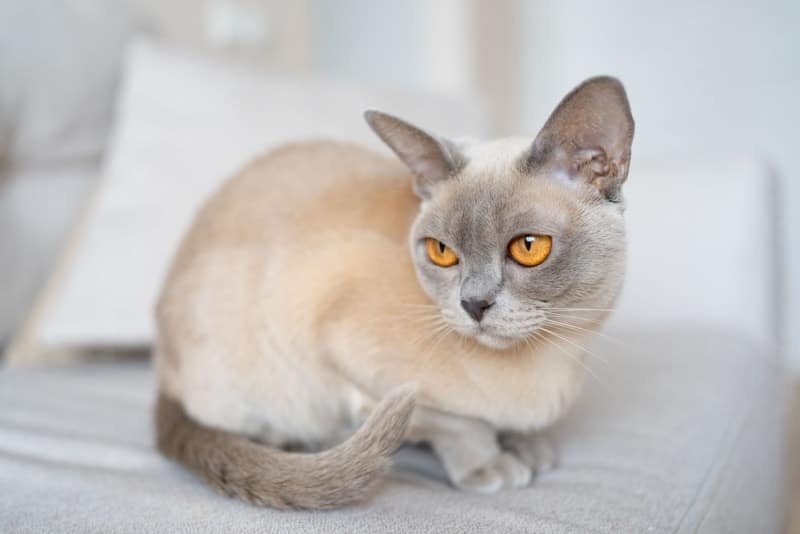
Final Thoughts
The European Burmese is a delightful purebred that has its own special variations. They are an all-around terrific cat—matching most lifestyles with ease. They have active, agile bodies and outgoing, curious personalities. Now that you have learned more about the European Burmese, what was your favorite fact?
Featured Image Credit: Frau aus UA, Shutterstock

